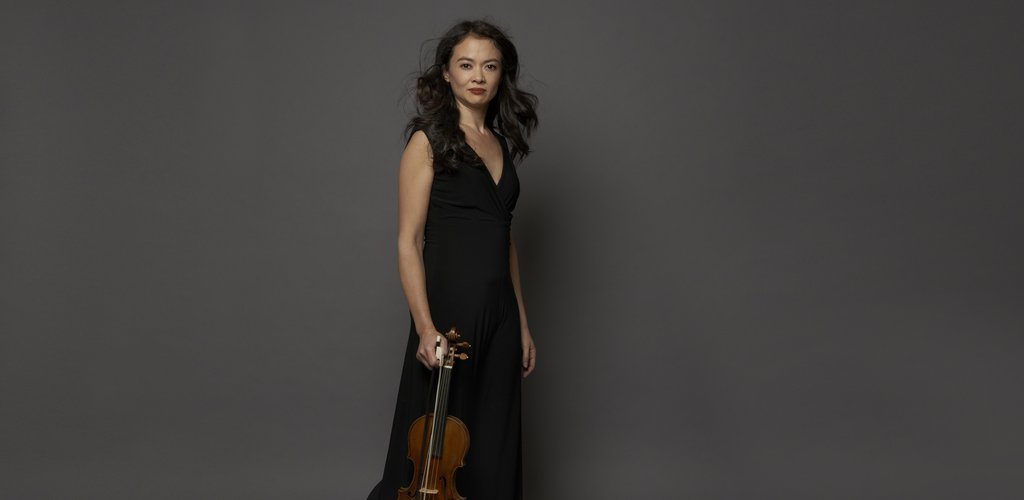The life of the world-famous Japanese-German violinist, Midori Seiler is intertwined with baroque music. She firmly believes that we can understand the emotions and thoughts of the 16-17th century through baroque music played on period instruments. Craziness, humour, intimacy - she is coming back to lead the baroque ensemble of the Budapest Festival Orchestra on 14&15 December. Read our interview with her.
Am I right if I say that you come to Hungary as an old friend of the Budapest Festival Orchestra, as if you would visit a part of your family?
Midori Seiler: Yes indeed, I am very lucky that I have got to know this group over the past few years better and better. It is much more fulfilling to work on a long term than to just once join a group and never meet again…The musical experience you make with a partner builds up each time you get back together! This time the concert programme is based mostly on the authentic Italian baroque music, which is the origin of that musical style.
How did you choose the pieces of the concert, especially the ones from Johann Adolf Hasse, who was born in Germany?
M.S.: Combinig Hasse with Italian composers is obvious: Hasse spent years in Italy to work in Naples and Venice and was actually regarded a composer of the Italian opera style. He was married to one of the most famous singers at that time, Faustina Bordoni. He kept a house in Venice, even after he had left the country to go to Dresden. But he went back to this house and died in Venice. His musical “Heimat” clearly was Italy. Born in “Il Seicento” in 1699, he had a career span which ended with the rise of Mozart’s first operas. What a biography! We are performing a so-called intermezzo, which was originally used as an “entr’acte” between the acts of a tragedy, to cheer people up. We use the same system with different contents: we put these intermezzo acts into the centre of our program and use the orchestral pieces as entr’actes.
Can we feel the influence of his master, Scarlatti in his music?
M.S.: Hasse was influenced by many great musicians of his time, there were his teachers in Naples Allessandro Scarlatti and Nicola Porpora (who was later teaching the teenage boy Joseph Haydn). He was a composer “for the voice”, being married to a fantastic soprano and having collaborated with singers like Farinelli. And there was the very inspiring and most successful cooperation with the German violinist star of that time: Johann Georg Pisendel. As the concertmaster of the Dresden court orchestra where Hasse worked for many years, Pisendel was the “father” of the modern orchestral culture which served as a model to other orchestras in all of Europe and still has enormous influence on orchestras of our time! He was the first to organize orchestral discipline and was a superb leader of his musicians. So the reforming power of Pisendel played an important role in Hasse’s career as a composer and conductor!
How do Geminiani’s “La Folia” and Hasse’s musical pieces relate to each other?
M.S.: Geminiani used the famous sonata “La Follia” of his violinist idol, Arcangelo Corelli, for a transcription for orchestra. There are numberless variations upon one little theme which reflect the caprioles of a troubled mind. Follia means craziness, which perfectly fits the theme of the intermezzi by Hasse with its many different emotions.
Giuseppe Torelli’s and Vivaldi’s music is also part of the concert. Do they have some similarities to Hasse as well?
M.S.: The sonata by Antonio Vivaldi is played by a very small cast as an intimate action between two solo violins which reflect the interaction between a couple, like in our intermezzo.
Torellis Concerto grosso is famous for its last movement, the pastorale per il santissimo natale. The pastorale character was used by many composers to draw the scenery of the shepherds in the field who remark the angels and witness the birth of Jesus. We can hear all these elements in the compositions: the darkness of the night, the vivid motion of the angels and fear and joy.
Wonderful singers, Yeree Suh and Fulvio Bettini will interpret the baroque pieces in authentic clothes and with baroque gestures. Do you find these additional elements important?
M.S.: We are so lucky to see a wonderful expert at work on this subject, Sigrid t’Hooft. Just by watching her work with the singers over the last years, I understood so much more about the power of words, obvious or hidden, in a text and how a singer or performer, can use body, hands and even eyes! to transport the meaning of words to the listener. So the baroque gesture gives an all-round information about what is actually going on inside the person who sings or speaks.
If it is possible, please define what baroque music is about! How can we in this hectic century understand and enjoy the special feelings of the age when that music was born?
M.S.: In the pre-baroque era, music had representative functions at courts of monarchs and as a demonstration of the divine order. With the baroque time, all of a sudden, the individual was getting important, feelings and thoughts of humans. That must have been quite a change! So we are constantly confronted with strong emotions. Of course, all humans have strong emotions. But as we know, in the European comparison, Italians are even nowadays somewhat excessive, passionate, exaggerated… Perfect for the directness of each musical character of our program!
